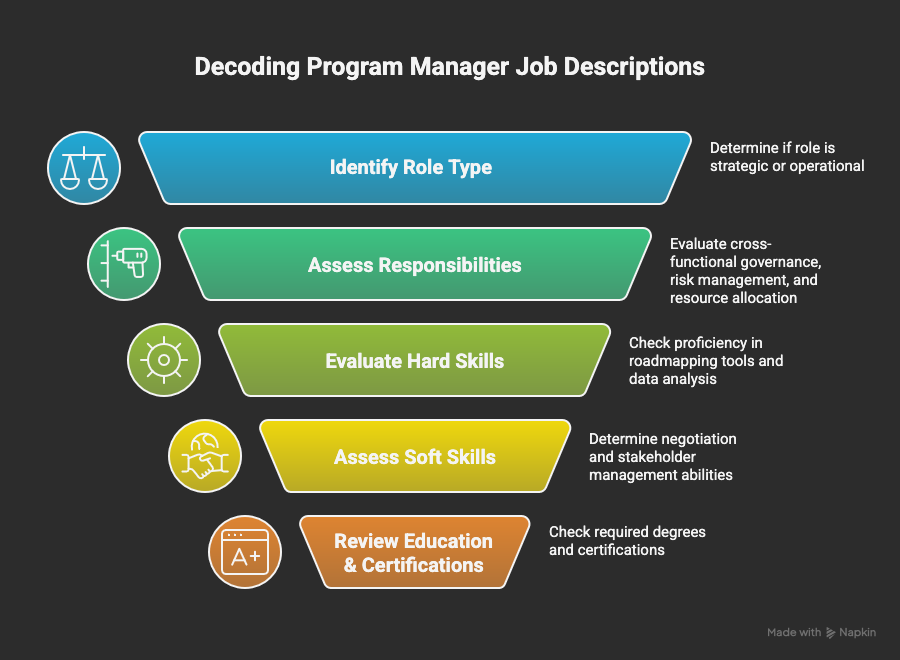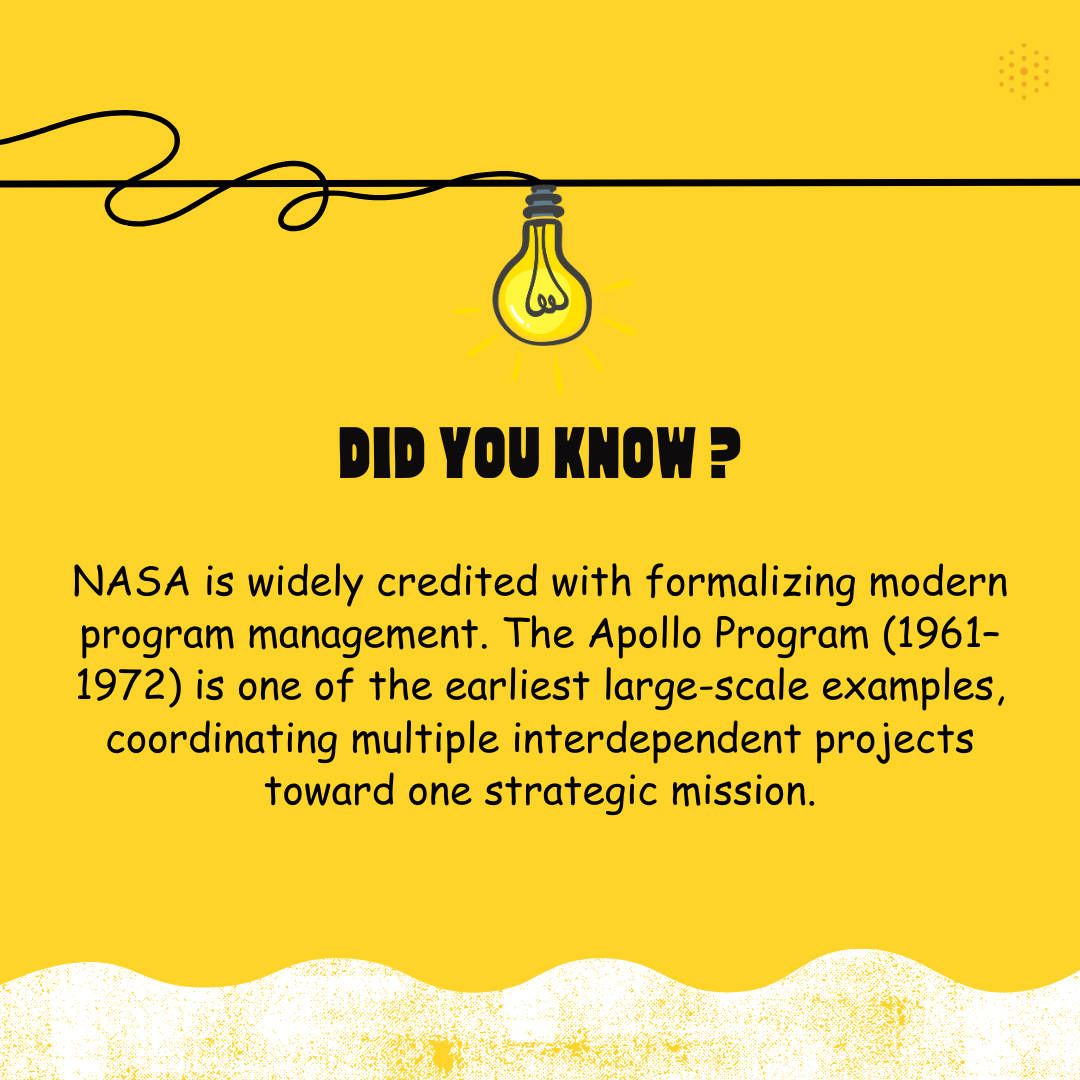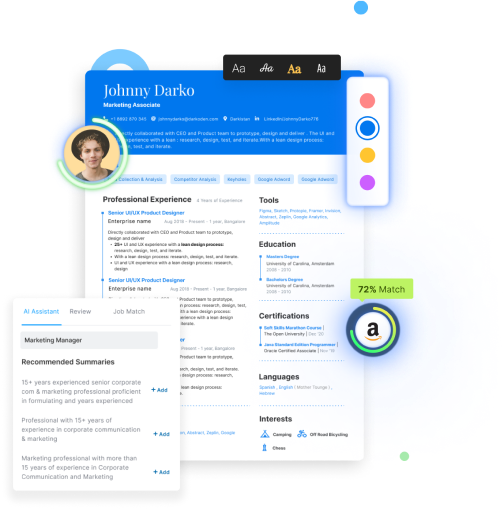Program Manager job descriptions are notoriously misleading.
They blur strategy with execution, bury the real expectations in jargon, and often mislabel the role entirely.
But hidden inside every JD are concrete signals about the program’s scope, the influence you’ll have, and the outcomes you’ll be accountable for.
Once you know how to read those signals, you can instantly spot which roles are truly strategic and which ones are just glorified project management in disguise.
Here's your guide to doing exactly that.
1. Know the Difference: Program vs. Project Manager
This is the biggest trap for job seekers. Companies often use these titles interchangeably, but they are fundamentally different.
If the JD focuses entirely on "deadlines," "deliverables," and "daily stand-ups," they are describing a Project Manager, not a Program Manager.
- The Reality: A Project Manager outputs deliverables (like a new app feature). A Program Manager outputs outcomes (like increasing market share by 20%). According to Adobe, program managers define the long-term strategy, while project managers handle the specific execution tasks.
- The Action: Look for keywords like "strategic alignment," "cross-functional leadership," and "ROI." If you are building your application, make sure your resume highlights business value over just task completion.
2. Responsibilities: The "Three Pillars" of Duty
In 2025, the "Duties" section of a Program Manager job description revolves around three specific pillars. If you can't demonstrate experience in these, you won't pass the screen.
A. Cross-Functional Governance
You will see lines like "lead cross-functional teams."
You will be managing people who don't report to you. You have to influence Engineering, Marketing, and Sales leads to move in the same direction without having hiring/firing power over them.
This requires high emotional intelligence. You need to master "influence without authority," a skill Teal ranks as a top underrated competency for 2025.
B. Risk & Dependency Management
The JD will ask for risk mitigation. You are the safety net.
If Team A is delayed, you need to know instantly how that impacts Team B's launch date three months from now. You aren't fixing the bug; you are mitigating the business impact of the bug.
C. Resource Allocation
You will be responsible for optimizing resource utilization.
You are the gatekeeper of the budget and headcount. You decide which projects get the best engineers and which ones get put on the back burner.
Also Read: What are the top program manager interview questions?

3. Hard Skills: The Tech Stack
Employers have stopped asking for generic computer skills. The modern Program Manager needs a specific, advanced tech stack like:
- Roadmapping Tools: Proficiency in Jira Advanced Roadmaps, Asana, or Monday.com is non-negotiable. You need to visualize complex timelines.
- Data Analysis: You must be able to pull your own data. Experience with Tableau or PowerBI is increasingly required to track program health without waiting for a data analyst.
- The Trend: Huntr reports that "Data Analysis and Reporting" is now a critical hard skill for Program Managers, as stakeholders demand real-time visibility into ROI.
What you’ll see in the job description and what they imply:
- Build and maintain program dashboards → You are expected to create your own reporting infrastructure, not rely on BI teams.
- Own OKR tracking for multiple workstreams → You must know how to convert strategic goals into measurable indicators.
- Experience with roadmaps or portfolio-level planning → This signals multi-quarter, multi-team strategy ownership.
- Comfort with basic SQL or data querying tools → Increasingly common in tech and product-led organizations.
Employers expect Program Managers to be analytical operators who can quantify impact and make data-backed decisions, not just facilitate meetings.
4. Soft Skills: Negotiation Over Communication
Job descriptions often list "Communication Skills." What they really mean is Stakeholder Negotiation.
You will be the bridge between technical teams and non-technical executives. You must translate "technical debt" into "business risk" for the CEO.
What this looks like inside a JD (and what it signals):
- Drive alignment across competing priorities → You’ll be negotiating resources, timelines, and tradeoffs constantly.
- Influence senior leaders without authority → Implies ownership of decisions made by teams that do not report to you.
- Manage expectations with executives and cross-functional partners → You’re responsible for shaping what gets delivered and when, not just communicating status.
Soft skills for Program Managers are fundamentally about steering decisions, not just sharing updates.
5. Education & Certifications
Do you need a certification? In 2025, the answer is nuanced.
- The Baseline: A Bachelor's degree is standard, but an MBA is preferred for top-tier tech and consulting firms.
- The Certifications: PgMP (Program Management Professional) is the gold standard, but it is hard to get. Meanwhile, PMP (Project Management Professional) is often listed as "required," but for a Program Manager, it is considered a baseline. And lastly, for tech roles, being a Certified SAFe® Program Consultant is a major differentiator.

6. Compensation & Career Path
Finally, the JD should hint at where this role sits in the hierarchy.
- The Salary: This is a high-value role. In the U.S., Program Manager salaries can exceed $138,000 annually depending on the sector.
- The Growth: A solid JD will position this role as a stepping stone to Portfolio Manager or Director of Operations.
How to decode the seniority signals in a JD
- “Reports to VP/Director” → Indicates high visibility and strategic influence.
- “Leads program reviews with senior leadership” → You’ll regularly interact with executives.
- “Owns multi-million-dollar budgets or multi-year roadmaps” → Suggests this is an upper-middle tier PM role, not an entry-level operations coordinator dressed up with a fancy title.
- “Opportunity to shape long-term strategy” → Strong indicator that the role ladders into Portfolio Management, PMO leadership, or Operations Strategy.
Compensation is only one piece - the program scale and reporting structure reveal far more about whether the role is strategic or operational.
Bottom Line
Decoding the job description of a Program Manager is really about spotting what the company values, the scale of ownership they expect, and the kind of impact they want you to drive.
Once you learn to read those signals, you can immediately tell which roles align with your strengths, and which ones are quietly setting you up for low-leverage work.
And if you want support translating those insights into a sharper resume, cover letter or LinkedIn profile, Hiration can help.
From analyzing job descriptions to refining accomplishments and tightening your narrative, we make it easier to present yourself as the candidate who actually understands the job behind the JD.



